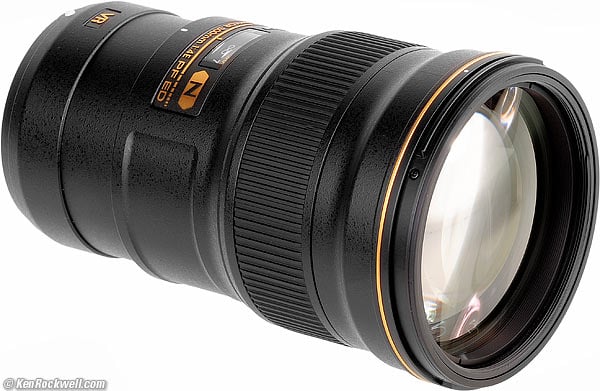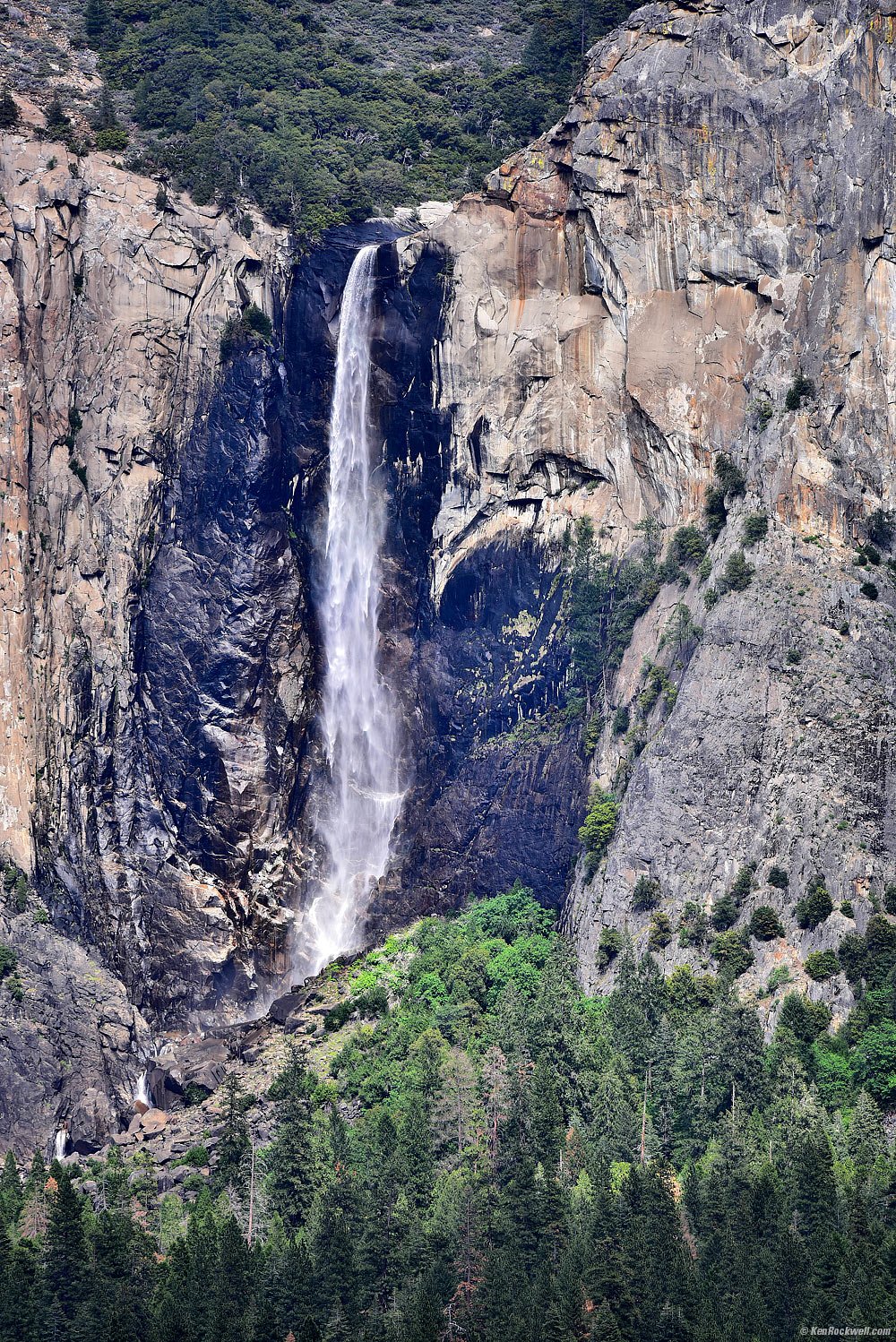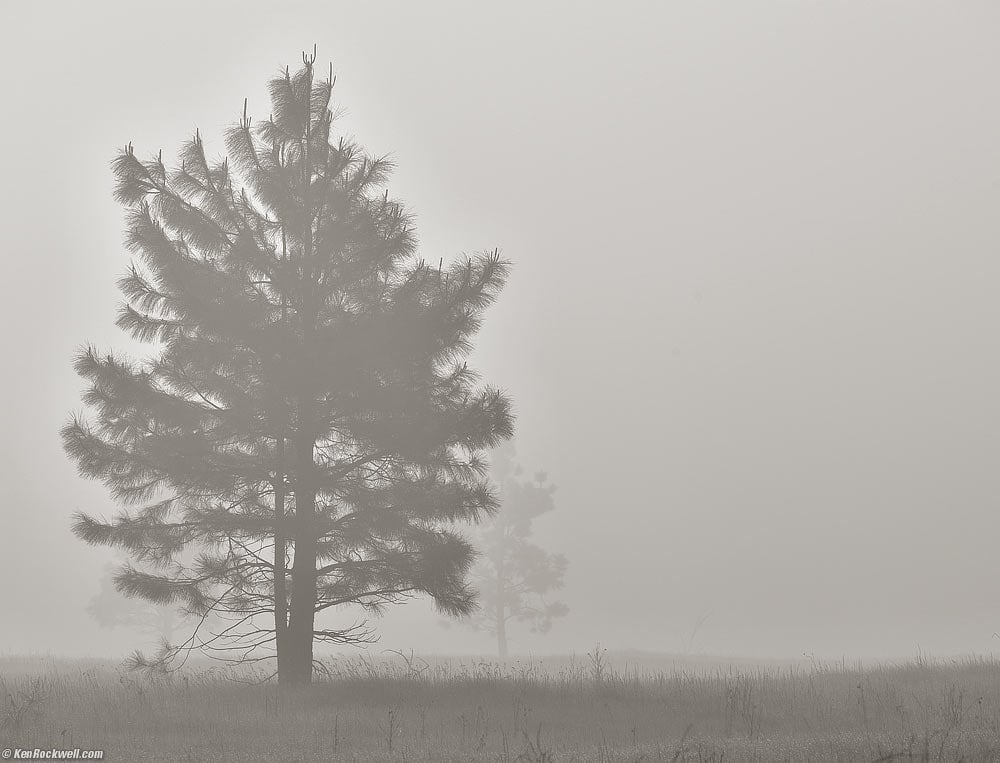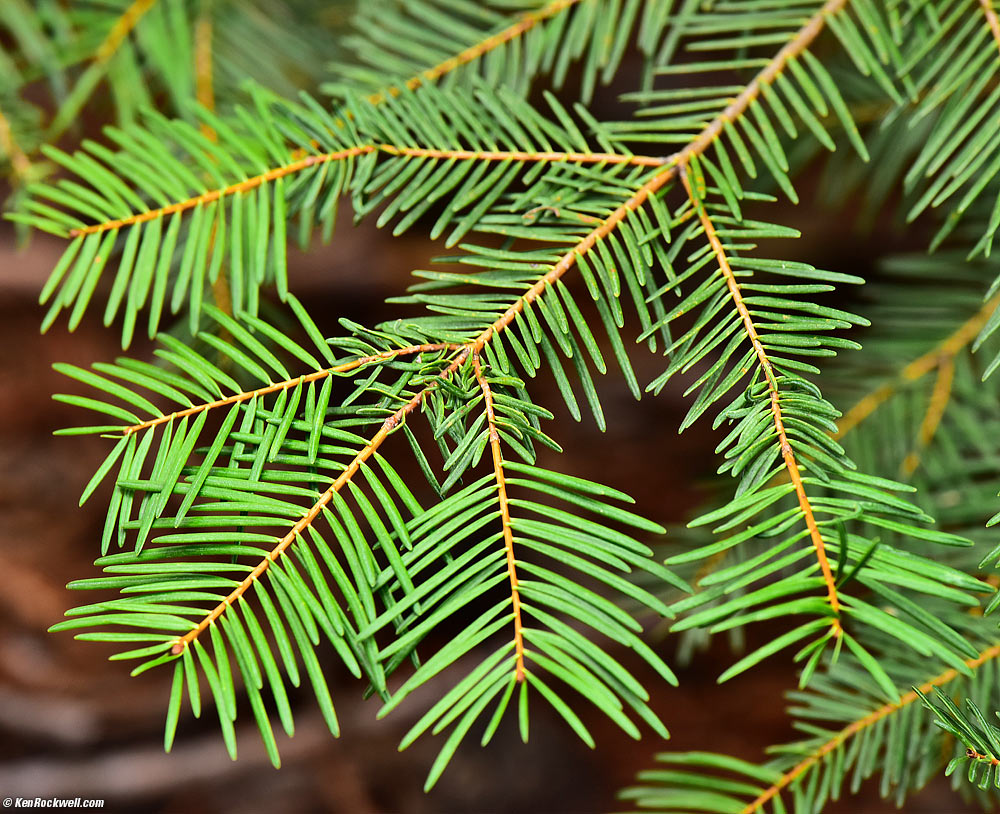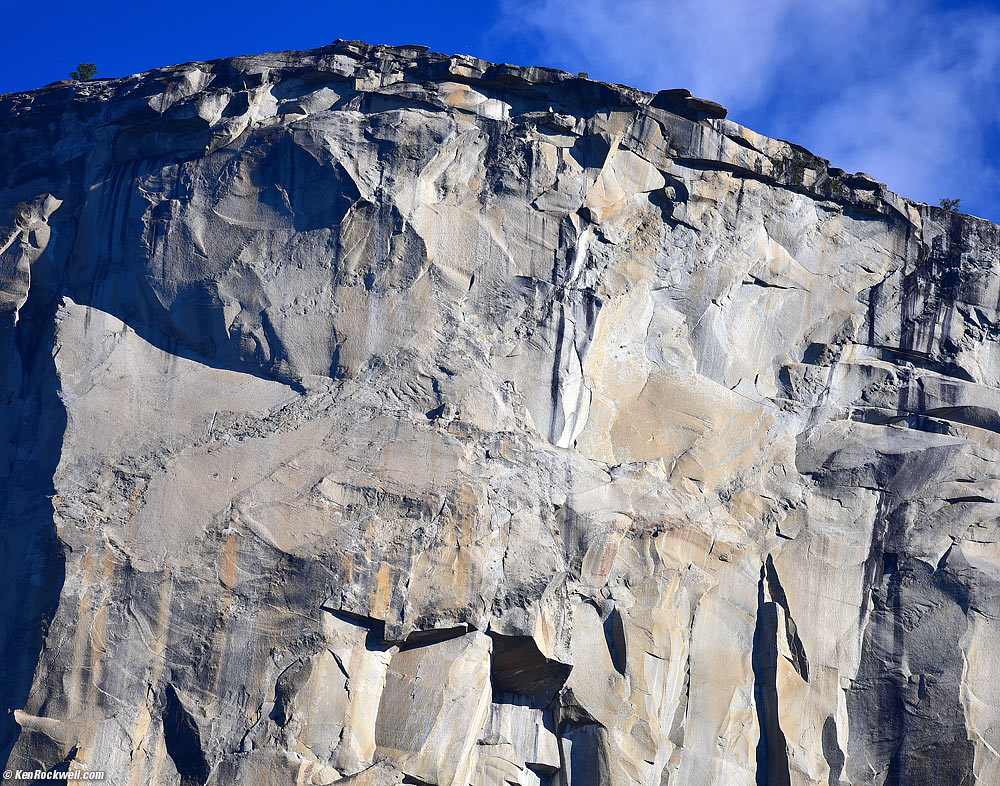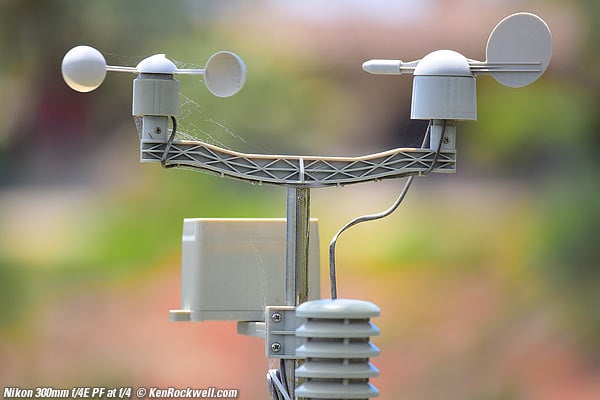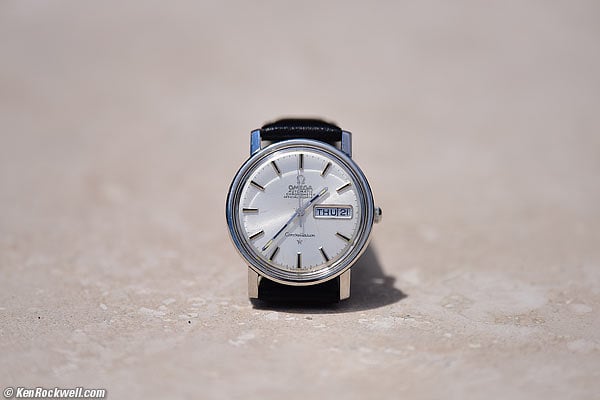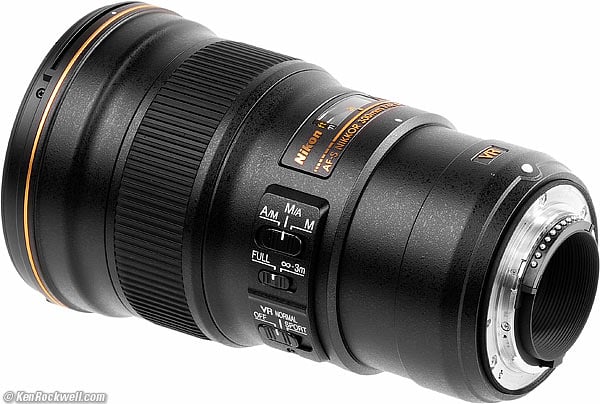Home Donate New Search Gallery Reviews How-To Books Links Workshops About Contact
Nikon 300mm f/4 E PF VR
Ultralight ED AF-S NIKKOR
(2015-)
Sample Images Intro Specs Performance
Compared Usage Recommendations More
Nikon 300mm f/4 PF VR (FX, DX and 35mm coverage, 77mm filter thread, 26.6 oz./754g, 4.6'/1.4m close focus, about $1,997). enlarge. I got mine at this link to it at Adorama, I'd also get it at Amazon or at B&H Photo Video, or used at eBay if you know How to Win at eBay.
This all-content, junk-free website's biggest source of support is when you use any of these links to approved sources when you get anything, regardless of the country in which you live. Nikon does not seal its boxes, so never buy at retail or any source not on my personally approved list since you'll have no way of knowing if you're missing accessories, getting a defective or damaged customer return or a used lens. Buy only from the approved sources I use myself for the best prices, service, return policies and selection. Thanks for your support! Ken.
August 2023, May 2015 Nikon Reviews Nikon Lens Reviews All Reviews
All Nikon 300mm f/4 Lenses Compared
Why Fixed Lenses Take Better Pictures
Sample Image Files top
Sample Images Intro Specs Performance
Compared Usage Recommendations More
Falls, Yosemite Valley, 15 May 2015. D810, wide-open at f/4 at 1/320 hand-held at ISO 100. Bigger or full-resolution file.
Sharp from edge-to-edge wide-open at 36MP; you can't get better optical performance.
Tree in Fog, Yosemite Valley, 16 May 2015. D810, f/11 at 1/500 at ISO 100. Bigger or camera-original © file.
Tree Fronds, Mariposa Grove of Big Trees, 16 May 2015. D810, f/5.6 at 1/30 hand-held at ISO 400. Bigger.
Stone Face, Yosemite Valley, 15 May 2015. D810, wide-open at f/4 at 1/1,000 at ISO 100. Bigger or full-resolution file.
Introduction top
Sample Images Intro Specs Performance
Compared Usage Recommendations More
|
Adorama pays top dollar for your used gear. I use these stores. I can't vouch for ads below.
|
This Nikon 300mm f/4E PF VR is the world's smallest and lightest fixed 300mm SLR lens by a large margin. It weighs half as much as the previous 300mm f/4 AF-S, and is 3" (75mm) shorter.
This 300mm lens is designed for those who actually shoot in the field all day, as opposed to sit around at home talking about it. It uses a Fresnel element to use less glass and save even more weight.
This lens is the same size as the 24-70/2.8, but weighs less! It weighs less than the 28-300mm VR, too.
This 300mm is small enough to fit perfectly in my Think Tank Speed Demon waist pack, and is comfortable wearing around my neck all day on my D810. That's why I got this lens: it's a 300mm I actually take out and use all day instead of leaving back in the car.
You may grab the focus ring at any time for instant manual focus override.
This lens uses an electronic diaphragm, and therefore is only fully compatible with cameras introduced since about 2007. See Nikon Lens Compatibility for the complete list.
It will not work properly with older DSLRs and will not work properly on any 35mm camera. Older cameras cannot control the diaphragm and it will always shoot at f/4.
Just for fun I tried it on my 1988 Nikon F4. It autofocuses, but there is no VR. It meters and auto-exposes — but it only shoots at f/4, which is where we usually want to shoot it.
I tried it on my Nikon F6, and everything works fine — except it only shoots at f/4.
I tried it on my Nikon FM3a, and it also works great, of course with manual focus, no VR and only at f/4.
Since this lens is usually shot wide-open, it's actually quite useful on 35mm cameras. Unlike G lenses, this lens always shoots at f/4 on older cameras, and that's usually where we want to shoot it.
This is a full-frame lens optimized for use on FX cameras, and I'll be reviewing it as such.
It works great on DX cameras, for which you may make the usual inferences.
1964-1969: 300mm f/4.5 NIKKOR-P
Nikon's first 300mm SLR lens was the f/4.5 NIKKOR-P.
It had 5 elements (P = Penta = 5) and had very strong lateral color fringes, visible even on 35mm film.
1969-1998: 300mm f/4.5 NIKKOR-H to AI-s
Nikon updated the design to six elements in the 300mm f/4.5 NIKKOR-H (H = Hexa = 6).
Coatings vary somewhat by era; multicoating came along in the 1970s.
Nikon made many different mechanical versions of this lens from 1969 through 1998 and they all share the same very good optics.
Its optics are far superior to to previous NIKKOR-P.
1977-1999: 300mm f/4.5 NIKKOR-ED and ED-IF
The 300mm f/4.5 ED (1977 - 1979) and 300mm f/4.5 ED-IF (1978 - 1999) are newer, more expensive and quite different designs.
They weigh less, are a little sharper and focus more closely than the older lenses.
The ED-IF version focuses internally, so only a fingertip flick of the focus ring is needed.
1987-2000: 300mm f/4 AF
The 300mm f/4 AF (1987 - 2000) has even better optics, and adds autofocus.
It's built like a tank, and has slow autofocus speed to match. You have to move two switches to get from auto to manual focus.
2000-present: 300mm f/4 AF-S
The 300mm f/4 AF-S adds ultra fast autofocus with instant manual focus override.
2015-present: This 300mm f/4 PF VR
The 300mm f/4 PF uses one Fresnel element for less weight. It's the same idea as Canon's DO lenses, which also use Fresnel elements.
Fresnel elements have been used for hundreds of years in lighthouse condensers.
It's also Nikon's first 300mm f/4 or f/4.5 lens with Vibration Reduction.
Specifications top
Sample Images Intro Specs Performance
Compared Usage Recommendations More
Name top
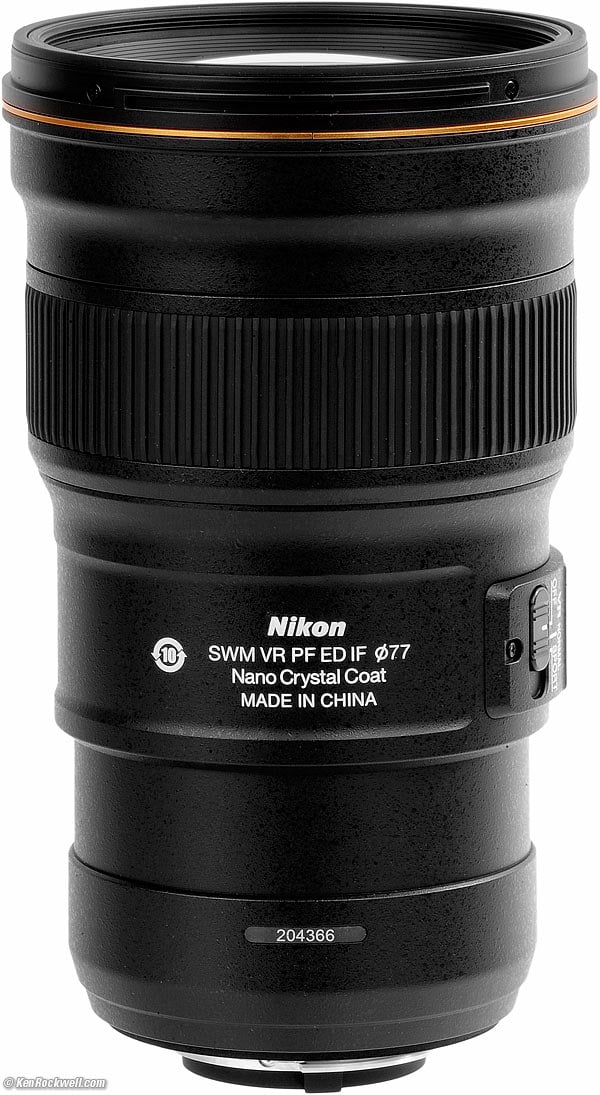
Bottom, Nikon 300/4 PF VR.
Nikon calls this the Nikon AF-S NIKKOR 300mm f/4E PF ED VR SWM IF ∅77.
AF-S and SWM: Silent Wave Autofocus Motor.
NIKKOR: Nikon's brand name for all their lenses.
E: Electronic diaphragm, just like Canon has been doing since 1987. This means it only works on the newest Nikon cameras.
PF: Pressed Fresnel element, which has a funny zig-zag cross section just as lighthouse condenser lenses do to save weight.
ED: Magic Extra-low Dispersion glass for reduced secondary chromatic aberration.
VR: Vibration Reduction. Claims almost 4 stops improvement.
IF: Internal focusing; nothing moves externally as focused.
∅77: 77mm filter thread.
Nano: Continuously variable index of refraction anti-reflection coatings.
Optics top

Nikon 300mm f/4 VR AFS internal diagram. ED glass and Fresnel.
16 elements in 10 groups.
One ED glass element.
One Fresnel element.
Internal focussing.
It's multicoated, which Nikon calls Nikon Super Integrated Coating.
One element has Nano coating for marketing purposes.
Fluorine front schmutz-resistant coating.
Close Focus top
4.6 feet (1.4 meters) from the image plane, marked.
Maximum Reproduction Ratio top
1:4.2 (0.24x).
Diaphragm top
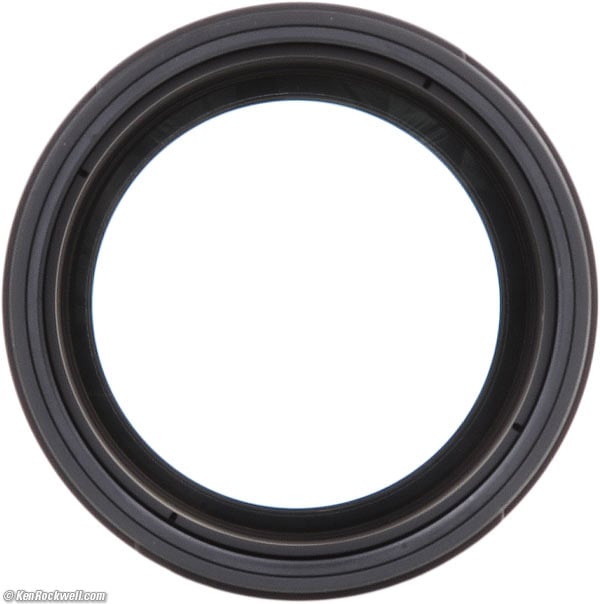
Nikon 300mm f/4 PF, diaphragm not visible.
9 rounded blades.
Stops down to f/32.
Electronically controlled for quieter operation, but isn't compatible with cameras made before about 2007.
Vibration Reduction top
Rated an astounding 4.5 stops.
Coverage top
Focal Length top
300mm.
When used on a DX camera, it sees angles of view similar to what a 450mm lens sees when used on an FX or 35mm camera.
Angle of View top
8.2° on FX digital and 35mm.
5.3° on small-format DX.
Hard Infinity Focus Stop? top
No.
You have to let the AF system focus at infinity.
Focus Scale top
Yes.
Depth-of-Field Scale top
No.
Infra-Red Focus Index top
No.
Aperture Ring top
No.
Tripod Collar top
Optional Nikon RT-1, $170.
Filter Thread top
77 mm.
Never moves.
Hood top
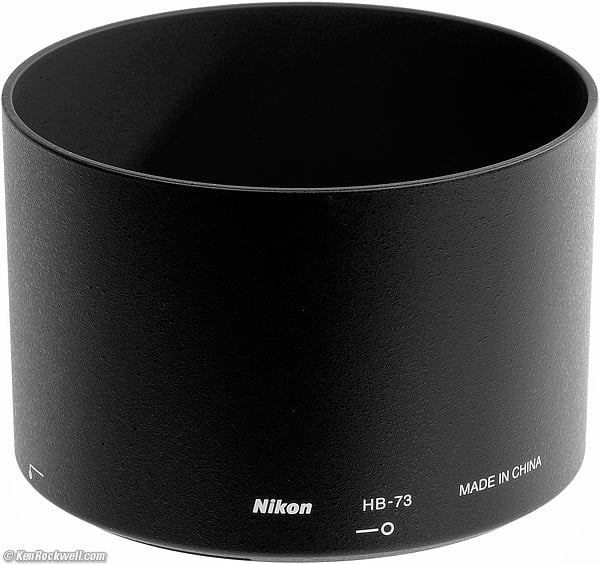
Nikon HB-73.
HB-73 plastic bayonet hood, included.
$62 for a replacement.
Case top
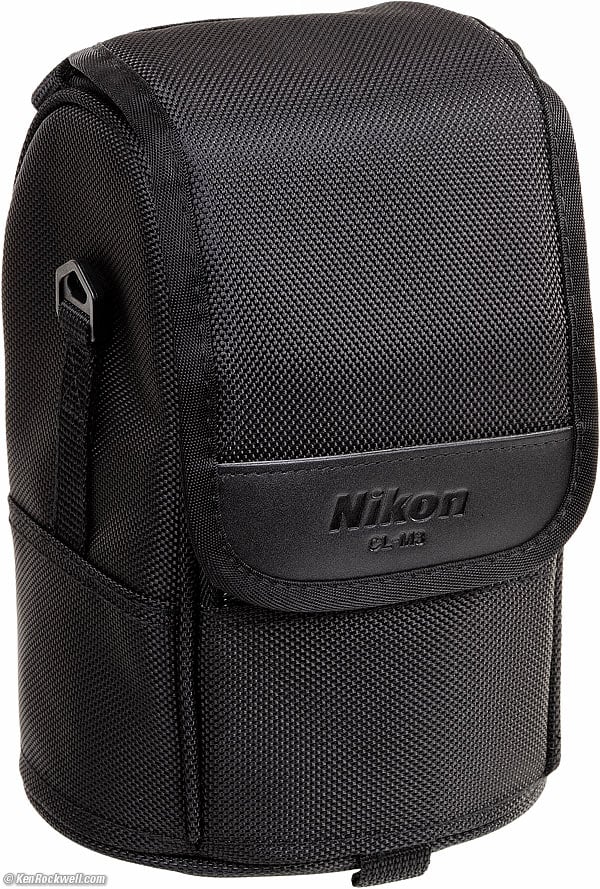
Nikon CL-M3 padded nylon case.
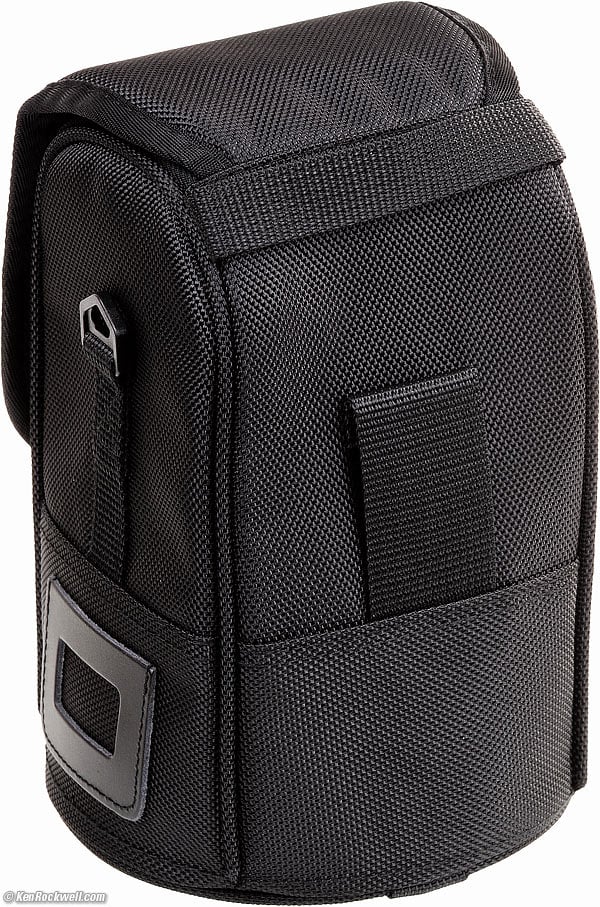
Rear, Nikon CL-M3 padded nylon case.
CL-M3 padded nylon case, included.
It's the same case included with the 14-24mm and the 24-70/2.8G.
Belt loop, velcro and dual-zipper closure.
Size top
Nikon specifies 3.5" (89 mm) diameter by 5.8" (147.5 mm) extension from flange.
Weight top
26.575 oz. (753.5g), actual measured weight.
Nikon specifies 26.6 oz. (755g).
Included top
Snap-on 77mm front lens cap.
HB-73 plastic bayonet hood.
LF-4 rear cap.
CL-M3 case.
Paperwork.
Warranty top
5 years, USA.
Teleconverters top
TC-14E, TC-17E and TC-20E teleconverters, as well as the -II versions.
The -E teleconverters allow autofocus, but your camera may not work well with the TC-17E or TC-20E because the effective aperture becomes f/6.7 or f/8, respectively.
Announced top
Monday, 05 January 2015, 9 PM NYC time.
Promised for top
Thursday, 05 February 2015.
Shipping Since top
Mine shipped to me on Wednesday, 06 May 2015.
As of the end of May, 2015, people who didn't order them the moment they were announced as I did are still waiting. See How to Get One.
Price, USA top
August 2023
$1,997 at Adorama, at Amazon and at B&H Photo Video.
About $900 used if you know How to Win at eBay.
May 2015
$2,150 if in stock, $1,997 if you order and wait.
January 2015
$1,999 at introduction.
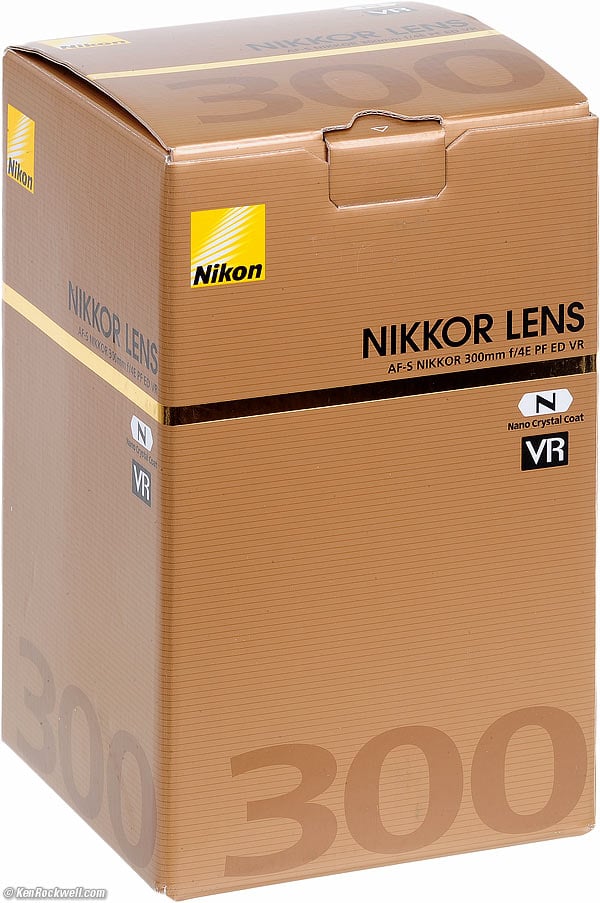
Box, Nikon 300/4E PF VR.
Performance top
Sample Images Intro Specs Performance
Compared Usage Recommendations More
Overall Autofocus Bokeh Distortion Ergonomics
Falloff Filters Focus Breathing Flare & Ghosts
Lateral Color Fringes Macro Mechanics
Sharpness Sunstars Vibration Reduction
Optics are great, but more important is that this is a lens for people who actually shoot, as opposed to just talk about it. (See The Two Kinds of Photographers.)
Its optics are swell, but far better than any armchair discussions is that this lens is so light that I actually carry it with me. It easily fits in my Think Tank Speed Demon belt pack, and it's so weightless that it's trivial and comfortable to have it on my Nikon D810 hanging around my neck all day. No other 300mm lens can do this; others weigh twice as much and won't fit in my preferred bags.
Overall performance top
The Nikon 300mm f/4E is a breakthrough, letting us tote a 300mm lens in our fanny pack or around our neck all day without strain. While it's not the best for pointing into the sun, so what: this is the 300mm lens you'll actually have with you when you need it.
Autofocus performance top
Autofocus is ordinary. It's reasonably fast, but it can get stuck or hang up and not focus sometimes if you're way out of focus and it can't figure out which way to go.
No worries, just flick the manual focus ring until it's close, and let autofocus take it from there.
Manual Focus
Manual focus is fast, and you can flick it with a fingertip.
It's not the best for precise work on a tripod with magnified Live View, but this lens isn't intended for that: it's a portable lens to be carried in the field for nature and action.
Bokeh performance top
Bokeh, the quality of out-of-focus areas as opposed to the degree of defocus, is great. Backgrounds just go away.
Nikon 300mm f/4E VR PF shot on full-frame at f/4. Camera-original © 36MP JPG file.
Distortion performance top
The Nikon 300mm f/4 VR PF has no visible distortion at any distance.
For more scientific use, use these figures to correct the tiny amount of pincushion distortion in Photoshop's Lens Distortion tool. These aren't facts or specifications, they are the results of my research that requires hours of photography and calculations on the resulting data.
100' (30m) |
-1.0 |
30' (10m) |
-1.0 |
10' (3m) |
-0.5 |
4.6' (1.4m) |
-0.7 |
© 2015 KenRockwell.com. All rights reserved.
Ergonomics (handling and ease-of-use) performance top
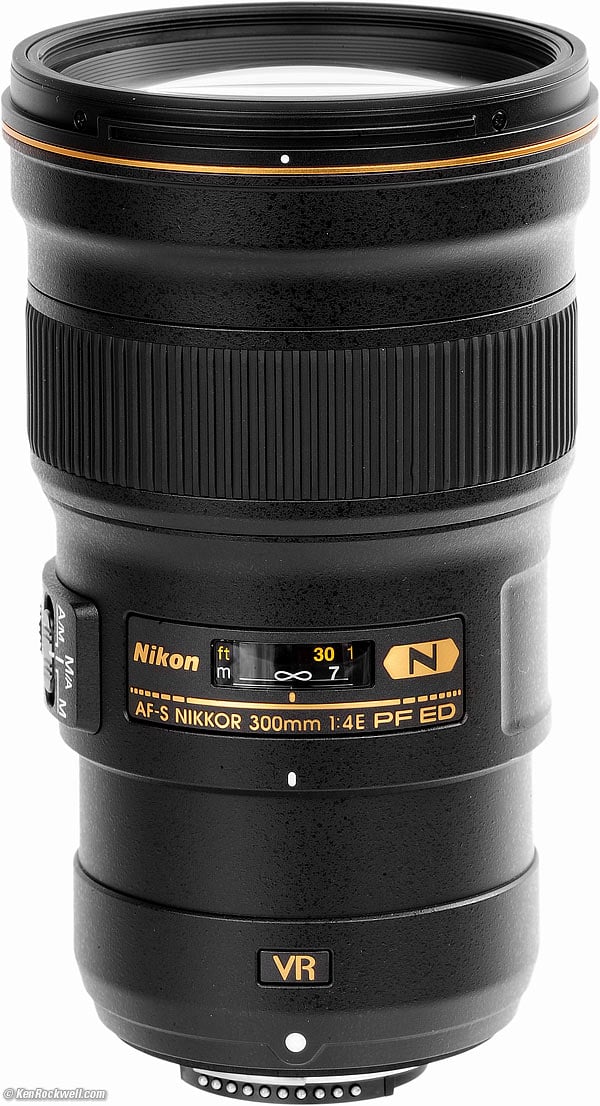
Nikon 300/4 VR PF.
Ergonomics are marvelous!
It's the perfect size and weight, and the focus ring falls right where it should in your hand. Ditto for the switches, which fall right under your thumb.
Falloff (darkened corners) performance top
Falloff on FX and 35mm is invisible, even without any vignetting correction.
It's even more invisible on DX (see crop factor).
I've greatly exaggerated this by shooting a gray field and placing these on a gray background; you'd never see this in actual photos.
Nikon 300mm f/4 PF falloff on FX and 35mm at infinity, no correction.
© 2015 KenRockwell.com. All rights reserved.
Nikon 300mm f/4 PF falloff on FX and 35mm at infinity, Normal Vignette Control on Nikon D810.
© 2015 KenRockwell.com. All rights reserved.
|
Filters, use with performance top
There is no problem with vignetting, even with combinations of thick filters.
The filter ring never moves.
Focus Breathing performance top
Of interest mostly to cinematographers focusing back and forth between two subjects, the image from the Nikon 300/4 VR PF gets bigger as focused more closely.
Flare & Ghosts performance top
The 300 PF uses some Fresnel elements which have concentric ridges. These ridges can be made to cause some weird flare if you point the lens at a light source.
Nikon cautions that the Fresnel element, with its circular scribe patterns, may generate weird kinds of flare with lights shining into the lens. Nikon also claims that its software may help; good luck on that one.
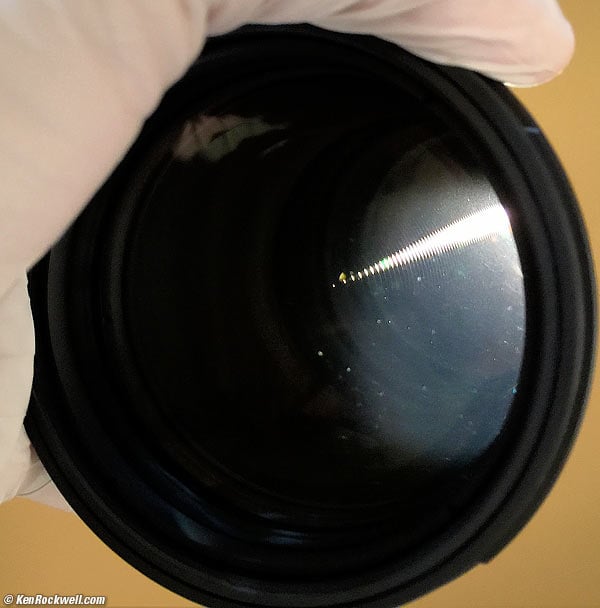
Light refracting from the concentric ridges of the 300 PF's Fresnel lens elements.
You won't see any problems unless you deliberately go looking for them by pointing your lens at the sun, but if you do, here are worst-case examples:
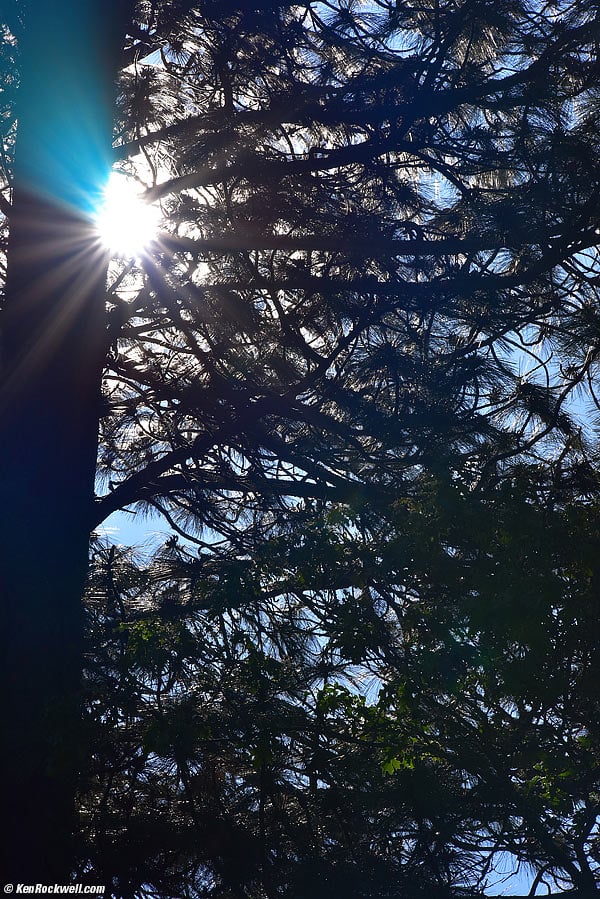
Yosemite National Park, 16 May 2015, f/22.
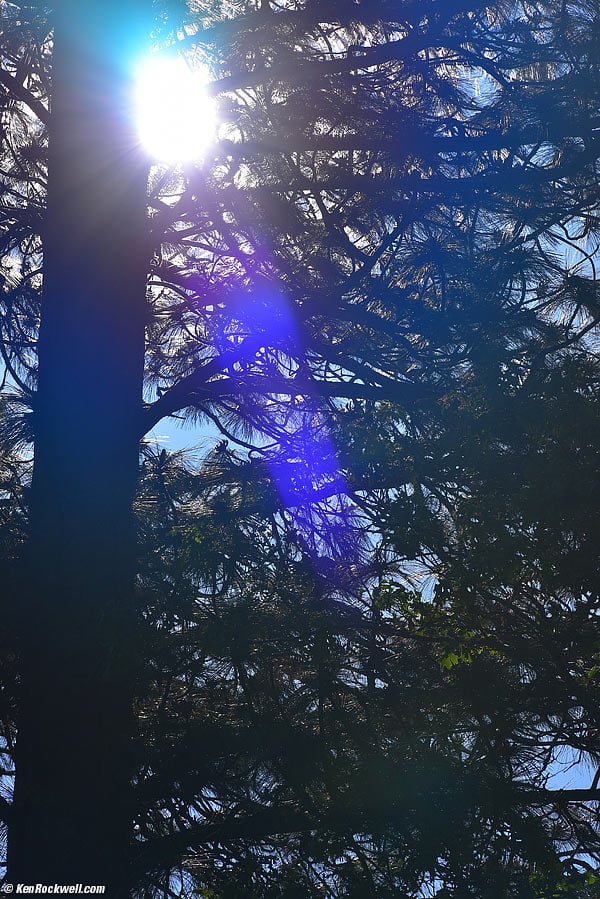
Yosemite National Park, 16 May 2015, f/11.
This is fine. I'm letting the sun shine right into the lens, and then filling the frame with dark trees to make any minor flare visible. This doesn't vary much with aperture; it varies more with the position of the light source.
Lateral Color Fringes performance top
There can be the slightest blue-yellow lateral color fringes on the D810, which corrects them automatically. I'd never see it unless I was deliberately looking for it.
Macro performance top
It gets pretty close:
Omega Constellation at close-focus distance on full-frame at f/4.
The images would be even tighter on smaller-format cameras (see crop factor).
It's super-sharp; here's a crop from a 36MP full-frame image at 100%:
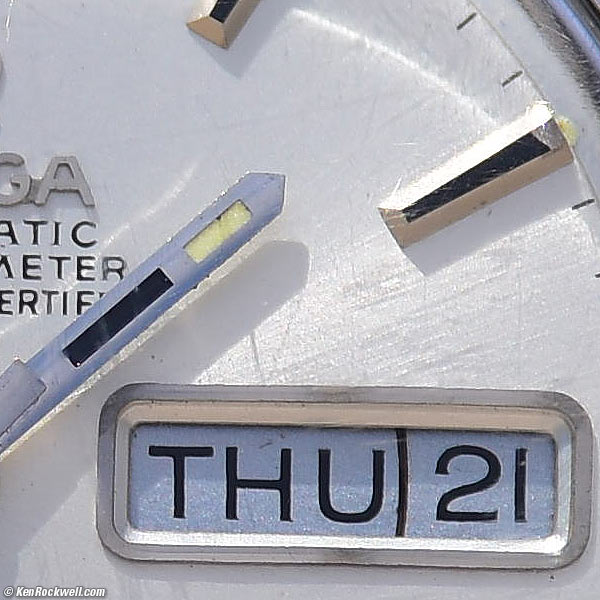
Crop from above image at 100%. If this is 6" (15cm) wide on your screen, the full image would print at 50 x 75" (1.25 x 1.9 meters)!
These samples are wide-open at f/4, which is superb. Many lenses get softer at macro distances wide-open; this lens stays just as sharp.
Mechanics performance top
Nikon 300mm f/4E PF VR. enlarge.
The Nikon 300/4 VR PF is well made of mostly plastic on the outside.
Filter Threads
Plastic.
Hood
Plastic bayonet.
Hood Mount
Plastic.
Gold Band
Metal.
Barrel Exterior
Plastic.
Focus Ring
Plastic; rubber covered.
Focus Scale
Yes.
Depth of Field Scale
None.
Internals
Mostly plastic, with some metal.
Aperture Ring
None.
Mount
Dull-chromed brass.
Markings
Paint.
Mounting Index Dot
White plastic ball.
Identity Plate
Plastic.
Serial Number
Sticker glued into a recess on the bottom of the lens.
US Model Signified by
5 Year Nikon USA sticker on outside of box and yellow Nikon USA 5-year warranty paper inside.
Moisture seal at mount
Yes.
Noises When Shaken
Rattles
Made in
China.
Sharpness performance top
Warning 1: Image sharpness depends more on you than your lens.
Warning 2: Lens sharpness doesn't mean much to good photographers.
While amateurs waste time worrying about lens sharpness, pros know that lens sharpness has little to do with making sharp pictures. This said, the Nikon 300/4E VR PF is ultrasharp, especially in the full-frame corners wide-open.
Your biggest roadblock to sharpness will be camera motion. Even with VR, this very light lens has a lot of magnification, and amplifies even the slightest camera motion for blurrier results. The VR system can only do so much with this lens, so I have to shoot at 1/250 or faster for best hand-held results.
Nikon's MTF curves confirm what I saw shooting this lens: it's just about optically perfect, even better than the previous 300/4 AFS which is also superb, and much better than my favorite 28-300mm VR:

Nikon 300mm PF MTF.
Sunstars performance top
With its rounded diaphragm, the 300/4 PF rarely makes any kid of sunstars on brilliant points of light.
Here's the best I can get, and this is at f/32:
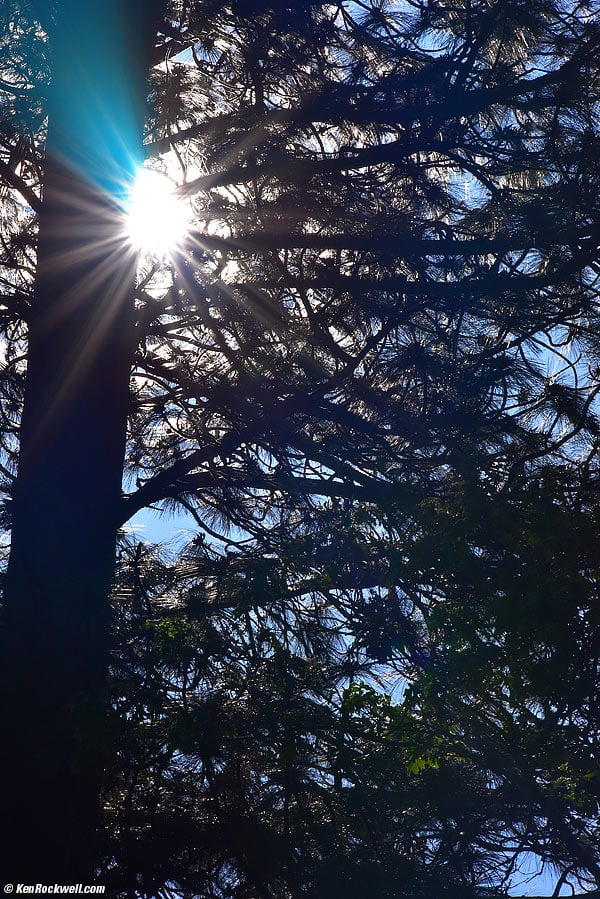
Yosemite National Park, 16 May 2015, f/32.
Vibration Reduction (VR) performance top
VR is poor on my D810.
I have to shoot at at least 1/250 for constantly tripod-equivalent sharpness at high magnification. At 1/160, most of the images are softer than I'd like when seen at 100% on-screen. Of course for normal use, you would never be looking at images that closely and you'd get away with much slower speeds.
AHA! It turns out that my lens reviewed here is defective. Nikon has a service advisory where if you send them your lens, they will fix this if you have a very early serial number as I have.
Nikon cautions that even the newer lenses (serial number 205101 and above) and my lens after repair (actually a firmware update) may not always work perfectly. It's hard for VR to work well with a light, long lens like this because they wiggle more than big, heavy teles, and have much more magnification than shorter lenses.
Compared top
Sample Images Intro Specs Performance
Compared Usage Recommendations More
See All Nikon 300mm f/4 Lenses Compared.
This is is the world's smallest and lightest fixed 300mm SLR lens. It's smaller and lighter than the previous winner, the manual focus 300mm f/4.5 ED-IF.
While this 300mm is the same size as the 24-70mm f/2.8G, this 300mm weighs 17% (5.2 oz./148g) less than the zoom! The 24-70 is shown at its shortest mechanical setting; it gets longer than this 300mm when set to wide focal lengths!
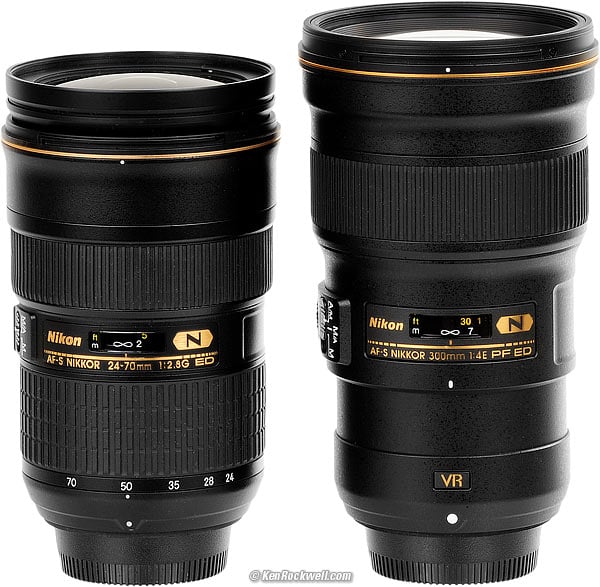
Nikon 24-70mm f/2.8G (902g) and 300mm f/4E VR PF (754g).
Usage top
Sample Images Intro Specs Performance
Compared Usage Recommendations More

Nikon 300mm f/4E VR PF.
A/m - M/a - M
Use A/m. This is autofocus, and also allows instant manual-focus override.
M/a does the same thing, but allows even the tiniest rotation of the focus ring to swap to manual focus. This is probably too sensitive and will sometimes go into manual mode when you don't intend.
M locks-out autofocus so it's always in manual focus.
Focus Limiter
I use FULL.
The ∞ - 3m setting (∞ - 10') prevents the lens from focusing closer than 3m/10.' Use this only if you're having problems with the lens jumping all over the range from very close to very far.
Vibration Reduction (VR)
NORMAL is just that. I use it.
SPORT is for panning and chasing subjects around.
VR doesn't do much on this lens; keep it at 1/250 or faster for best results if you're counting pixels.
Tripod Collar
This lens is designed for hand-held shooting.
If you use a tripod, you may as well use the non-VR 300/4 AF-S which is better made and much less expensive.
When I've used this lens on a tripod, I don't need no stinking collar. It's light enough, like the 24-70/2.8, that I just attach my camera to the tripod.
If you insist, feel free to buy the $170 Nikon RT-1 tripod collar.
Recommendations top
Sample Images Intro Specs Performance
Compared Usage Recommendations More
This Nikon 300mm f/4 VR PF is for the photographer who actually shoots, as opposed to just talking about it. It's half the weight of other 300mm lenses, so this is the 300mm you'll actually take out and use.
It certainly will be sharper than a 70-200mm VR II and TC-14E.
When you get yours, use only these links to approved sources of supply, especially this link directly to this lens at Adorama, B&H Photo Video or at Amazon. Using any of these links when you get anything, regardless of the country in which you live is my biggest source of support and ensures you get the best prices, selection and service. It helps me keep reviewing these lenses when you get yours through these links — but I receive nothing for my efforts if you take your chances and buy elsewhere. Never buy at retail; Nikon doesn't seal its boxes so you never can be sure if you really got a new lens or not when buying at retail.
Thanks for your support!
Ken.
Deployment
I'd leave either a 77mm Nikon Clear (NC - UV) filter, or a 77mm Hoya Evo MC UV on the lens at all times.
If you want the best possible protective filter, the 77mm Hoya HD2 UV is ultra multicoated, repels dirt and fingerprints and made of shatter resistant glass. I'd put this filter on my 300/4 PF; it's an expensive lens worth protecting with the best filter.
If I was working in nasty, dirty areas and don't want to spring for the HD2 filter, I'd use an uncoated 77mm Tiffen UV filter instead. Uncoated filters are much easier to clean, but more prone to ghosting.
I would leave the hood at home.
For color slides like Velvia 50, I use a 77mm Hoya HMC 81A or 77mm Nikon A2 filter outdoors.
For B&W film outdoors, I'd use a 77mm Hoya HMC Yellow K2 or 77mm Hoya HMC Orange.
More Information top
Sample Images Intro Specs Performance
Compared Usage Recommendations More
Service advisory for early production
Help me help you top
I support my growing family through this website, as crazy as it might seem.
The biggest help is when you use any of these links when you get anything, regardless of the country in which you live. It costs you nothing, and is this site's, and thus my family's, biggest source of support. These places have the best prices and service, which is why I've used them since before this website existed. I recommend them all personally.
If you find this page as helpful as a book you might have had to buy or a workshop you may have had to take, feel free to help me continue helping everyone.
If you've gotten your gear through one of my links or helped otherwise, you're family. It's great people like you who allow me to keep adding to this site full-time. Thanks!
If you haven't helped yet, please do, and consider helping me with a gift of $5.00.
As this page is copyrighted and formally registered, it is unlawful to make copies, especially in the form of printouts for personal use. If you wish to make a printout for personal use, you are granted one-time permission only if you PayPal me $5.00 per printout or part thereof. Thank you!
Thanks for reading!
Mr. & Mrs. Ken Rockwell, Ryan and Katie.
Home Donate New Search Gallery Reviews How-To Books Links Workshops About Contact
